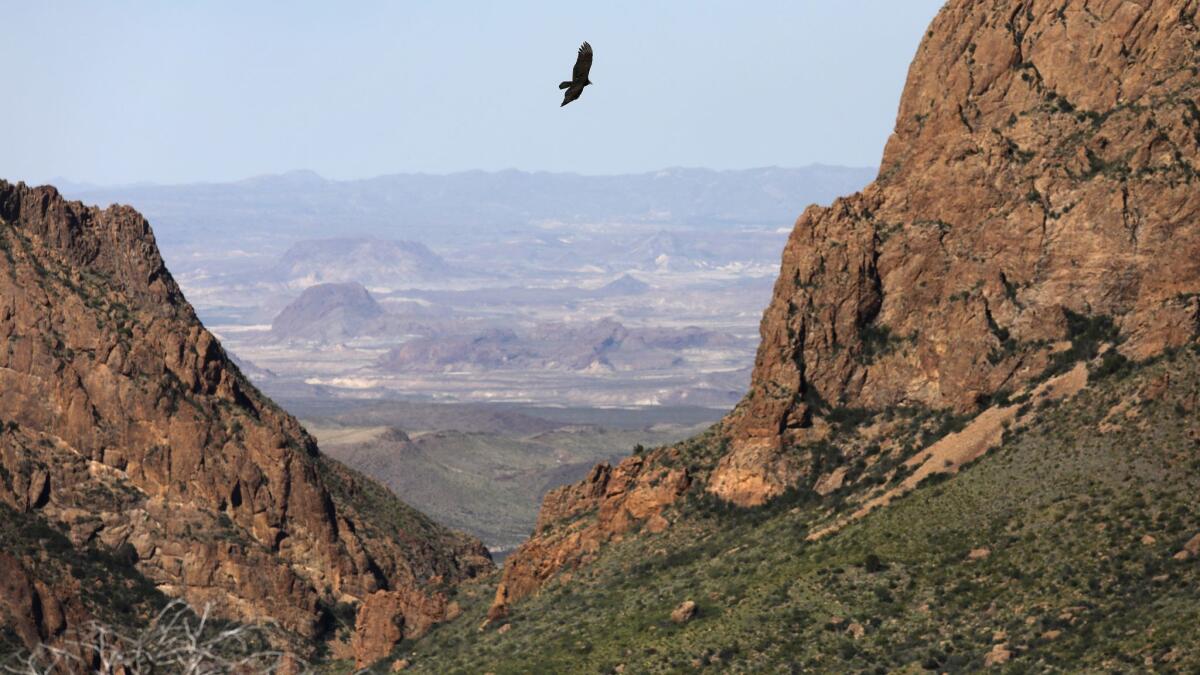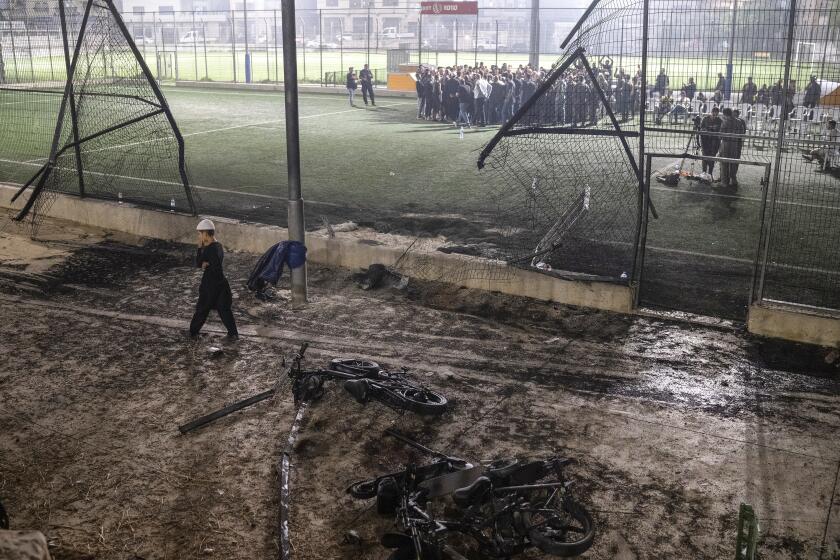The stunning beauty of Big Bend National Park stretches across two countries. Could it survive a wall?

If it belonged to anyone, this expanse of high desert was first the domain of the nomadic Chisos Indians, who were killed off by the Apaches, who were defeated by the Spanish, who were run off by the Comanches — until white settlers imported repeating rifles and put an end to all debate about who owned what.
Six different flags have claimed the land that composes Big Bend National Park, but the arid Chihuahuan limestone soil resists most attempts at settlement. The Spanish called it “El Despoblado,” the uninhabited land. For most of its history, the 800,000 acres belonged to the wild.
Now, many here are worried about what would be the most powerful territorial claim of all: A proposed wall along the U.S.-Mexico border that, if extended as far as this remote national park, would form a permanent divide along the Rio Grande.
No one knows how far beyond cities such a wall would extend, but conservationists here already are raising an alarm. Their chief fear is that such a barrier would threaten the slow but steady reintroduction of wildlife species killed off here during the 19th and 20th centuries, one of the Southwest’s most important environmental success stories.
“It would completely ruin the experience of one of the most beautiful natural places left in this country,” said Rick LoBello, a former Big Bend park ranger and director of conservation group the Greater Big Bend Coalition.
Taken in from nearly any direction, the park’s scale is staggering. Unlike heavily forested mountainous areas, the shrubby yucca, agave and creosote provide uninterrupted views of soaring peaks, lush, high-elevation glens and the American piece of the Chihuahuan Desert, the largest in North America.
Created by a “rain shadow” effect between the Sierra Madre Occidental and Sierra Madre Oriental mountain ranges, the desert here was once a rich font of biodiversity, hosting species from bighorn sheep to gray wolves.
Settlers from the Eastern U.S. claimed the land, first for the Republic of Texas, then the United States, and held the area for more than a half century. They grazed their livestock on a fragile ecosystem that crumbled under the demands of raising cattle on it.
Grass was planted over native shrubbery, destroying the feeding stock of the area’s natural predators. Undesirable plants were dug up by the acre; bats were driven from caves; bears, jaguars and wolves were shot on sight.
Then the great drought of the Dust Bowl years drove many ranchers into financial ruin, and on the same day U.S. forces were landing on the shores of Normandy in France, on June 6, 1944, President Roosevelt signed the Big Bend National Park into existence.
The Mexican black bear, which once wandered freely through the Chisos Mountains, had been one of the casualties of the ranching era. The bears had largely disappeared on the American side of the border by the 1940s, wiped out by hunting and poisoning.
But the open border proved to be a boon. The bear survived in the Maderas del Carmen on the Mexican side of the border, and by the late 1980s, park rangers made a remarkable discovery: A black bear mother and cub had migrated to the U.S. side.
By 1999, there were 343 sightings of bears on the American side of the river. “The recolonization of black bears in Big Bend is a remarkable natural event,” the park service says now on its website.
But what would happen if the bears’ free-range habitat, so crucial to its reemergence, were to be split by a wall?
The answer, wildlife advocates and park officials say, depends on where a wall was located, and how it was constructed.
Placing it on the border itself would be difficult: According to the original agreement struck between Mexico and the United States, the border runs to the deepest part of the Rio Grande’s channel as it ran in 1848, the year of the Treaty of Guadalupe Hidalgo.
“I can’t even begin to predict what the impact would be without knowing the specifics” of the wall, said Big Bend Park Ranger Jeanette Juraldo.
One potential concern, Juraldo said, would be the impact on plants along the Rio Grande.
“If it were to be in the river or along it, certainly we have several species of plants that would be affected,” she said.
As for the potential impact on the bears, “it’s just basic science that a physical barrier would prevent the species from [mingling] genetics,” Juraldo said.
Isolating bears on either side of the wall, aside from the disruption to their foraging, could expose them to genetic weaknesses as the two separated bands began to inbreed.
The disruption could extend beyond a physical barrier, LoBello said. Vegetation that gets in the way of construction would probably be cleared, reducing available food sources for the park’s dozens of protected and endangered species, including the long-nosed bat, which relies on agave plants with their dense nutrient content on long migratory flights.
Increased human activity on both sides of the border with construction and monitoring of a wall would serve to drive species away from a natural point of intermingling, further isolating their genetics, conservationists fear.
There are also worries that construction of a barrier would interfere with the very nature of the park, once envisioned as a binational free zone between Mexico and the U.S., though that plan never came to fruition.
“What will be the future relationship of these neighboring protected areas on the United States/Mexico border?” the park’s leadership asks rhetorically on its website. “Only time will reveal the exact outcome.”
Jude Hickey has no such ambiguity. He has been coming to Big Bend from his home in Austin for a decade, and when considering the prospect of a wall dividing the river, he scoffed.
“I don’t know that we could even undo that if it happened,” Hickey said. “It’s really just natural once. Then it’s gone.”
Follow Nigel Duara on Twitter: @nigelduara
ALSO
What border walls look like around the world
El Paso and Juarez know what happens when a wall divides two cities
Border walls aren’t unheard of, but today they increasingly divide friends, not enemies
More to Read
Sign up for Essential California
The most important California stories and recommendations in your inbox every morning.
You may occasionally receive promotional content from the Los Angeles Times.











